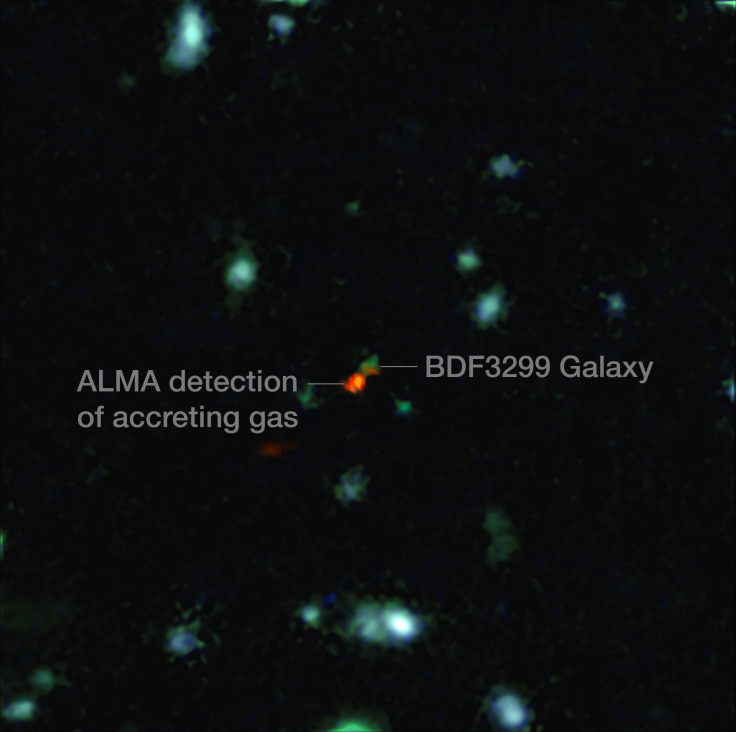Ancient Galactic Assembly Dating Back To Dawn Of Universe Detected

Sometime between 200 million years and 1 billion years after the Big Bang, the universe entered a phase of “reionization” when neutral material dominating the cosmos started to condense -- a process that eventually led to the formation of the galaxies we see today. Despite their best efforts, scientists have been unable to glean enough information about this early phase of our universe, as the first galaxies have only been visible as extremely faint blobs.
Now, a team of astronomers using the Atacama Large Millimeter/submillimeter Array (ALMA), a giant radio telescope in Chile, have detected the most distant clouds of star-forming gas yet found in normal galaxies in the early universe. The faint glow of the ionized carbon cloud, which is in the process of assembling into a galaxy, was detected in a galaxy named BDF 3299 -- one that formed just 800 million years after the birth of our universe.
“This is the most distant detection ever of this kind of emission from a ‘normal’ galaxy [as opposed to galaxies with very high rates of star formation], seen less than one billion years after the Big Bang. It gives us the opportunity to watch the build-up of the first galaxies,” Andrea Ferrara, a cosmologist and co-author of the study, published in the Monthly Notices of the Royal Astronomical Society, said in a statement. “For the first time we are seeing early galaxies not merely as tiny blobs, but as objects with internal structure.”
However, scientists noticed that the glow of ionized carbon -- seen in the image as a red cloud -- was not coming from the center of the galaxy, but from one side. The researchers think that the off-center location of the glow is because of disruption by the radiation from newly formed stars and the effects of supernova explosions.
The discovery is significant as scientists have long been attempting to understand the interstellar medium and the formation of reionization sources in the early universe. The observation can help astronomers test and refine models of early universe.
"Finally to be able to test predictions and hypotheses on real data from ALMA is an exciting moment and opens up a new set of questions. This type of observation will clarify many of the thorny problems we have with the formation of the first stars and galaxies in the universe," Ferrara said in the statement.
© Copyright IBTimes 2024. All rights reserved.












